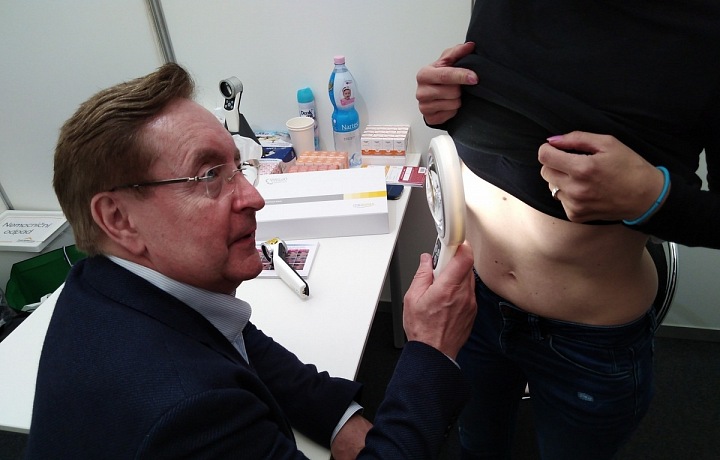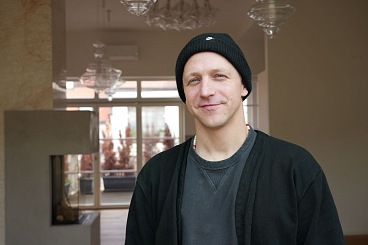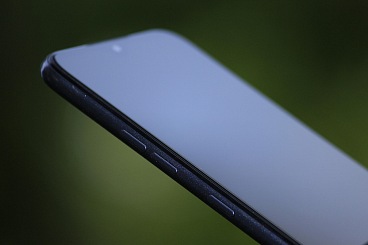Fast Confession - Dermatologist Professor Petr Arenberger: How to avoid skin cancer
The largest organ in the human body? Don‘t let yourselves be fooled, it‘s neither brain nor lungs, but our skin, which performs many important functions. The summer holiday season is far from over and many of us like to visit exotic places not only to relax, but also to enjoy the sun and come home with a tan. The question is to what extent "catching bronze" is healthy for our skin. What risks await in direct sunlight and what symptoms constitue a warning and an incentive for us to visit a dermatologist? Professor Petr Arenberger, one of the most famous Czech dermatologists, answered these questions in the following interview.
Professor, what are the risks of sun exposure for the skin?
Excessive exposure to sunlight contributes to aging of skin and increases the likelihood of skin tumors. Ultraviolet radiation penetrates the skin and changes it. At first our skin darkens elegantly, but over time speckled pigmentation begins to form on the skin. These spots are most noticeable in seniors, where we refer to them as solar lentigo.
So when I notice these spots on my body, does that mean something‘s wrong?
Yes, it is a warning and at the same time a sign that you have been overdoing it with the tanning for a long time. But UV radiation also penetrates into the middle layer of the skin and damages connective fibers. The skin loses its elasticity and firmness, wrinkles begin to form. Actinic keratoses, which manifests as rough flakes on the skin, appear on the areas that have been exposed to long-term and intense sunlight.
To sum it up, sunbathing equals wrinkles, speckled pigmentation and actinic keratoses. That sounds pretty scary…
Yes, sunbathing definitely causes unnecessary skin damage. Some people might argue that this only means we get all the more patients interested in botox application, mesotherapy and fillings, so we should in fact be glad. But a real dermatologist thinks about prevention first.
For example, Chinese people in Beijing never go out without a parasol and they always use suncscreen, because they want to look young. The skin usually handles the first twenty years of exposure to direct sunlight well, but then the aging processes begin to accelerate. What would have normally happened to your skin at the age of sixty will happen at forty.
To what extent does sunbathing, on the other hand, supply the skin with vitamins?
It causes the activation of vitamin D in the skin, but that‘s not always the case and it doesn‘t apply to all of us. I have recently carried out a research project in which I was aiming to verify the connection. For instance, when I had patients with melanoma, who came with a tan from Egypt, I measured the amount of vitamin D in their body. I foud out that they had even less of it than those who protect themselves from the sun.
I consulted this fact with experts on metabolism, who agreed that vitamin D is only activated in human skin, if the skin contains its precursor. In older people, there is not enough of in the skin anymore. The good news, however, is that it can be replaced by a suitable diet that contains, for example, enough fish. I would advise the readers not to believe in myths like "if you expose yourself to direct sunlight every day at noon, you will have more vitamin D". This is not always the case, and with increasing age the chance keeps dropping.
You have recently been on holiday in Turkey and, to tell the truth, you don't look it at all. How did you manage to avoid getting a tan? Can you give us some advice?
I use sunscreen with a protection factor of 50. Of course, I also wear a hat or cap that I swim in, and own beachwear that has been a hit for the last 15 years. In the Czech Republic, parents often buy it for their children. These garments with verified and certified UV protection are made of a very soft and breathable material. Ever since I‘ve started wearing it – and I do so even while swimming - I haven't burnt my shoulders.
And what about children?
Parents should not expose their children to direct sunlight at all in the first year of their life. From then onwards, I recommend using combined photoprotection for children, that is both physical and chemical. At the seaside, it is a good idea to dress children primarily in beachwear. Nowadays, you can buy beautiful overalls with various prints, there‘s a lot to choose from.
Another risk of high exposure to UV radiation is skin cancer…
Yes, skin tumors result from a gradual and long-term accumulation of ultraviolet radiation. Therefore, the main risk factor that we can influence by our behavior is exposure to unprotected skin to sunlight.
Is skin cancer hereditary?
We can‘t speak about heredity as such, but about obtaining a particular aptitude or quality of skin from our parents. If you have a family history of skin cancer, you definitely should visit the dermatologist regularly.
What can we consider a warning sign? How can we recognize a tumor on the skin?
There are many types of skin tumors, which means I can‘t give a conclusive answer to your question. Metastasis can start, albeit very rarely, even in a common basal cell carcinoma, which affects one in three Czechs on average. Another type of cancerous tumor can be spinalion, which is much less common, but all the more dangerous.
Every year about 25,000 to 30,000 patients are newly diagnosed with skin cancer in the Czech Republic. But the tumor people fear much more is malignant melanoma, which initially manifests as a small pigment spot. Over time, however, it can grow, and in more advanced cases, even create a bleeding ulcer. It can also grow from a birthmark or appear under a nail. The most insidious quality of a melanoma is its thickness. A melanoma that‘s still relatively safe can have the size of about 0.8 millimeters. One that‘s larger than four millimeters is already very dangerous.
Another type of skin tumor is Merkel cell carcinoma. Fortunately, it appears much less frequently than melanoma, but if diagnosed late, in approximately a third of the cases the patient has one or two years left to live. It usually looks like a small red pimple that can appear anywhere on the body. This is why prevention is very important – which means monitoring changes in one‘s body and regularly visiting a dermatologist, who is irreplaceable when it comes to diagnostics.
What about the so-called self-examination?
Everyone has access to our website www.melanom.cz, where people can find out how to check their skin regularly. If new manifestations occur or initially normal birthmarks begin to change, it is good idea to go to the dermatologist. When the patient arrives on time, we can promise they will be completely cured in the vast majority of cases. The good news is that even a proportion of patients in advanced stages of cancer can survive long-term thanks to today's modern treatment.
What is the success rate percentage of skin cancer treatment?
If the patient arrives on time, we guarantee almost 100 percent success, even with melanoma. The time factor plays a big role here. In case of Merkel's carcinoma, even weeks can make a huge difference.
Today's modern treatment for advanced stages of skin cancer is no longer focused on cell damage; it can activate the immune system, forcing it to destroy tumor cells. More and more treatment options are becoming available; in the last five years, besides very effective biological immunotherapy, targeted treatment with so-called small molecules is being used, so we can offer our patients an increasingly long-term survival with a very good quality of life.
Fast confession:
What did you want to become when you were little?
What are the three most common myths about sunbathing?
Which group of people is most at risk from from skin cancer?
What would your dream vacation look like?
What kind of sunscreen is safe for a vacation a the sea?
Self tanning creams - yes or no?
How often should people have their birthmarks checked?
How do you prefer to relax?
When was the last time you got a sunburn?
Name three things that cause skin cancer.
What are the quickest steps one should take in case of a first-degree burn ?
Guaranteed help against acne?
Can you give us a tip to prevent wrinkles?
How do I find out I'm going too wild on sunbathing and have tanorexia?
What would you ask me?
OK, better not then… (laughs)














